In love with the island car
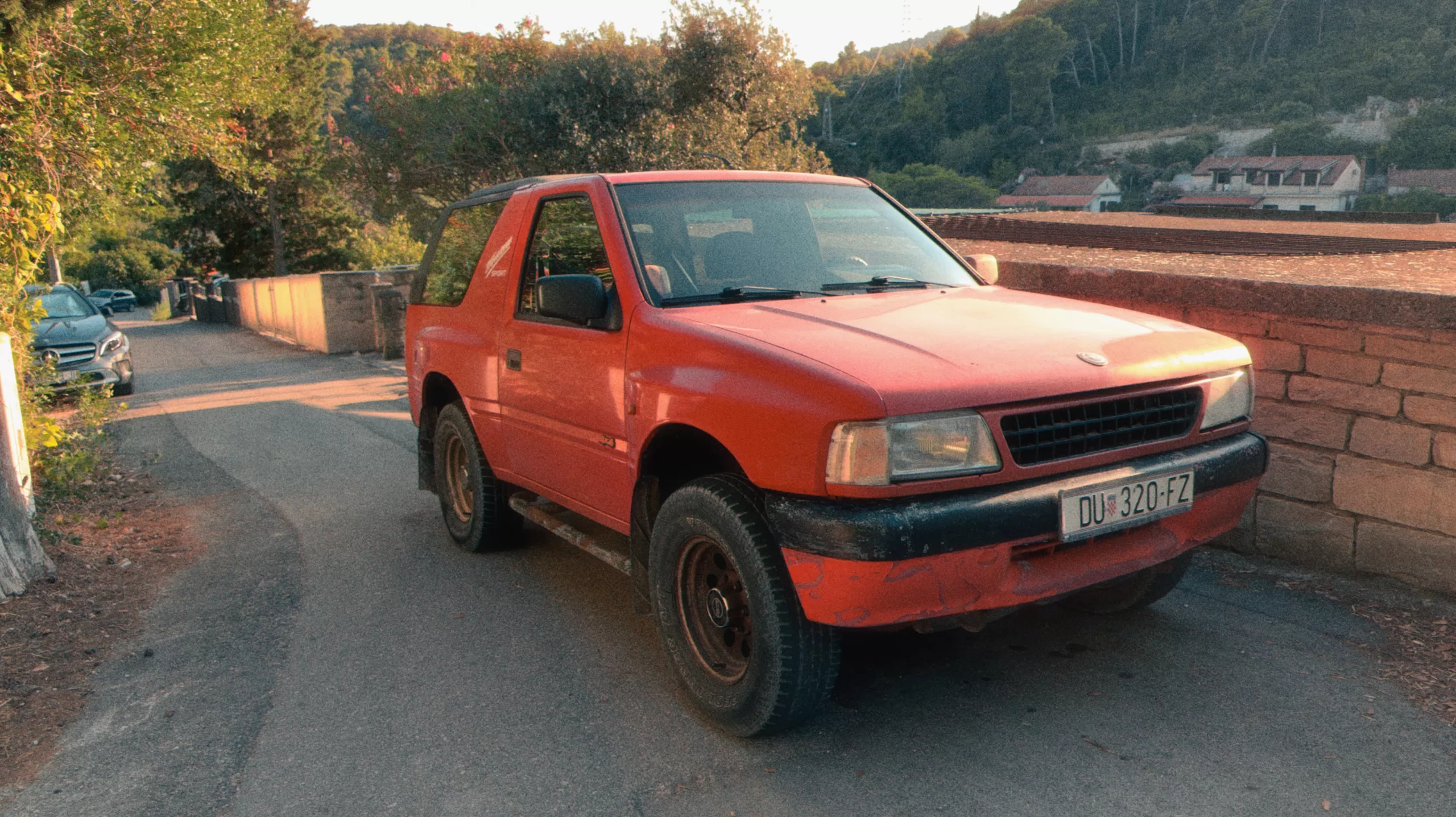
The guide to the neglected and faded cars of Croatian islands.
Sitting on the terrace of the apartment I’ve rented for the summer on the Croatian island of Korčula, I have the privilege of looking directly towards the sea which is just around 20 meters from me. This is not the story of good seaside relaxation, however: it’s a story about the Island Car, one of Man’s finer creations.
On Korčula and other Croatian islands, a car is, more often than not, just a tool. Not a statement of taste or a collector’s item but rather something that moves you from one place to another, preferably without needing help from a mechanic. The “island car” is the purest form of the idea of transportation, and much like the “village car” and the “weekend house car”, its siblings in vibe, is a statement to just how easy cars are to live with if you are not obsessed over screens, automatic climate controls, new tires, good paint or going anywhere fast.
It stays here year-round, and rarely goes to the mainland (some of them never do). The island car might be shared among family and might not even be registered (some Croatian islands do have cars, but no registration needed). It’s whatever will start in the morning and carry people, fish, shopping, or whatever else from one point to another. Usually, it’s a small hatchback: a Fiat Punto, a Peugeot 206 or a VW Golf 2, but it could be anything with four wheels, a radio, and a pair of doors. Interestingly, SUVs could be the perfect island car, but they are the rarer option. Speaking of options, seatbelts are there but I’ve never seen one used.
Island cars aren’t “loved” the way someone might love a classic Porsche or an Alfa. Their owners think of them just as ‘a car for the island’, and do not waste time washing them, God forbid detailing them, or fixing many of their dents and scratches. Many of these owners have second cars that they love and cherish much more (and drive much less), but they would be lost without the Island Car.
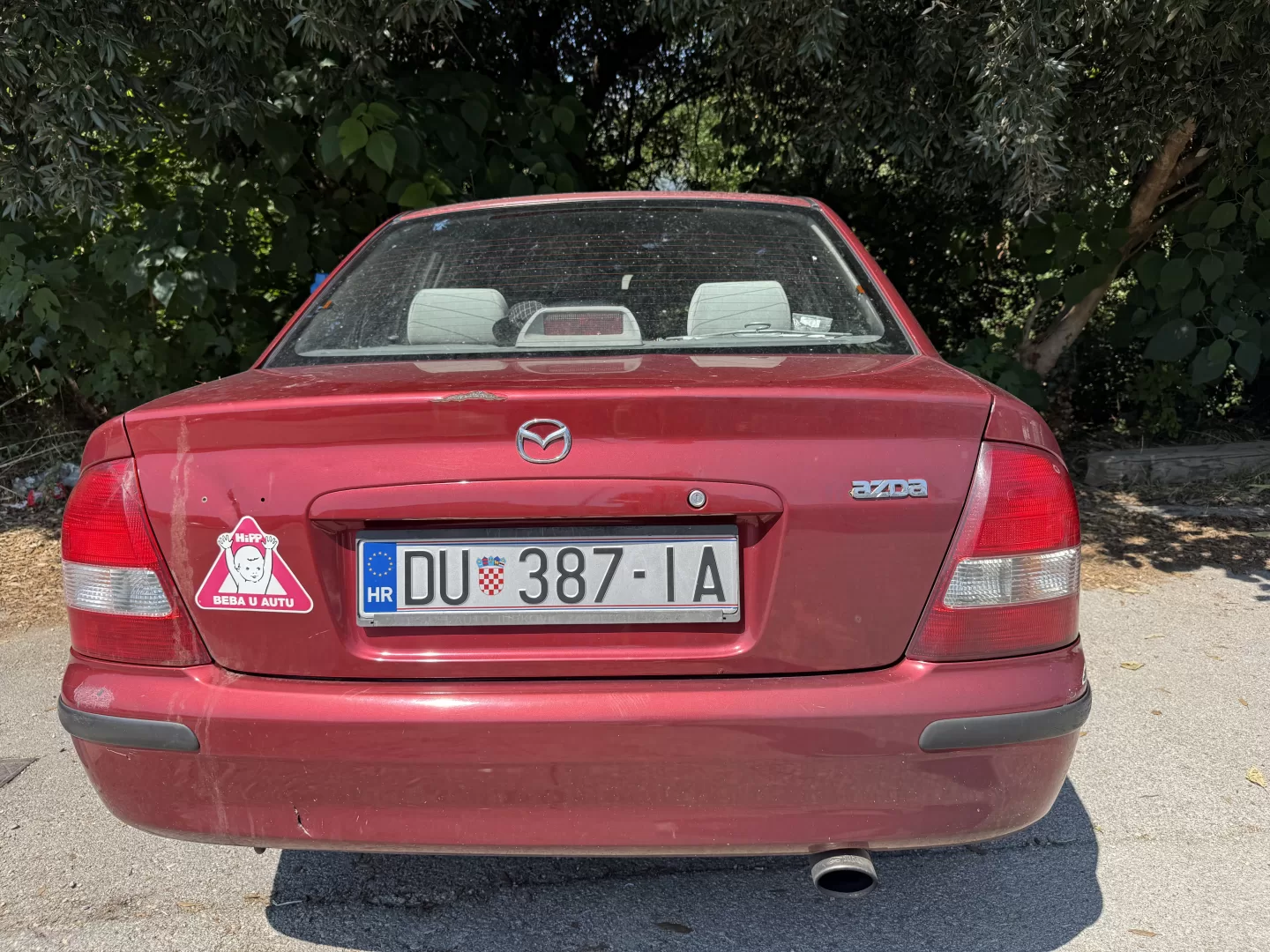
Why They Survive Here
Korčula is one of more than thirty Croatian islands where cars are allowed. Short distances, low speeds, and no winter road salt mean a vehicle can last decades if you let it (or force it). Outside the summer season, traffic rules are looser, and the island’s remoteness means repair work is mostly done only if something goes terribly wrong.
The main idea of an island car is to have a reliable form of transportation around the island. Most of the cars are run-down, with paint fading, rusty wheels, creaking doors and dings and scratches all around. In my short time here, I saw a Citroen C3 with doors that would not close, around half a dozen Fiat Puntos in various states of discolouration, a TAS VW Golf and at least a dozen weird cars that never were too popular, like the 80s Corolla sedans, Opel Fronteras and Mitsubishi Pajeros.
Case Study: The Land Cruiser
| Spec | Detail |
| Model / year | J90, Late 90’s |
| Engine | 3.0, 120 hp when new |
| Notable quirks | Always parked with windows down |
| Condition | Several shades of green paint |
Our host’s daily driver is a 2000s Toyota Land Cruiser. Once metallic green, it now cycles through several shades — sunburnt silver on the roof, dark emerald where the paint has survived, bare metal and spots of rust where it hasn’t. The wheels are covered in surface rust, the rear fog light housings were crashed into at least several times, and the plastics have turned grey.
It’s the ideal island car: a true off-roader with a simple diesel engine that runs forever, and a boot big enough for anything. The windows stay open, even in the rain. It starts on the first try, better than some much better-kept cars. Looking at it, it has so much character and charisma, and makes me smile every time.
The Land Cruiser just sits at the beach unlocked, with keys inside, waiting for someone to drive it. I remember our host, Rita, getting dressed up and going to a concert to a town around 15 minutes away, and taking the Land Cruiser without even looking. Her husband, Mario, jumps in it, doesn’t even put the seat belt on, and performs super risky manoeuvres on the edge of a cliff overlooking the sea like it’s nothing. The Land Cruiser just nods and does what’s needed, probably happy because it is closest to what it was actually meant to be doing from the very start.
A Better Life Than the Audi
The same family owns a mint 2020 Audi Q7. I’ve never seen it move beneath its improvised bedroom sheet cover. The Land Cruiser, on the other hand, leaves the driveway several times per day, and goes everywhere: to the far ends of the island, for errands, visits to family, beach days, hauling things. The Q7 is for the mainland, once every few months when the family takes a break from the sun and sea.
Parked for a week next to a Tesla Model 3, the Toyota looked like the better car. It probably is.
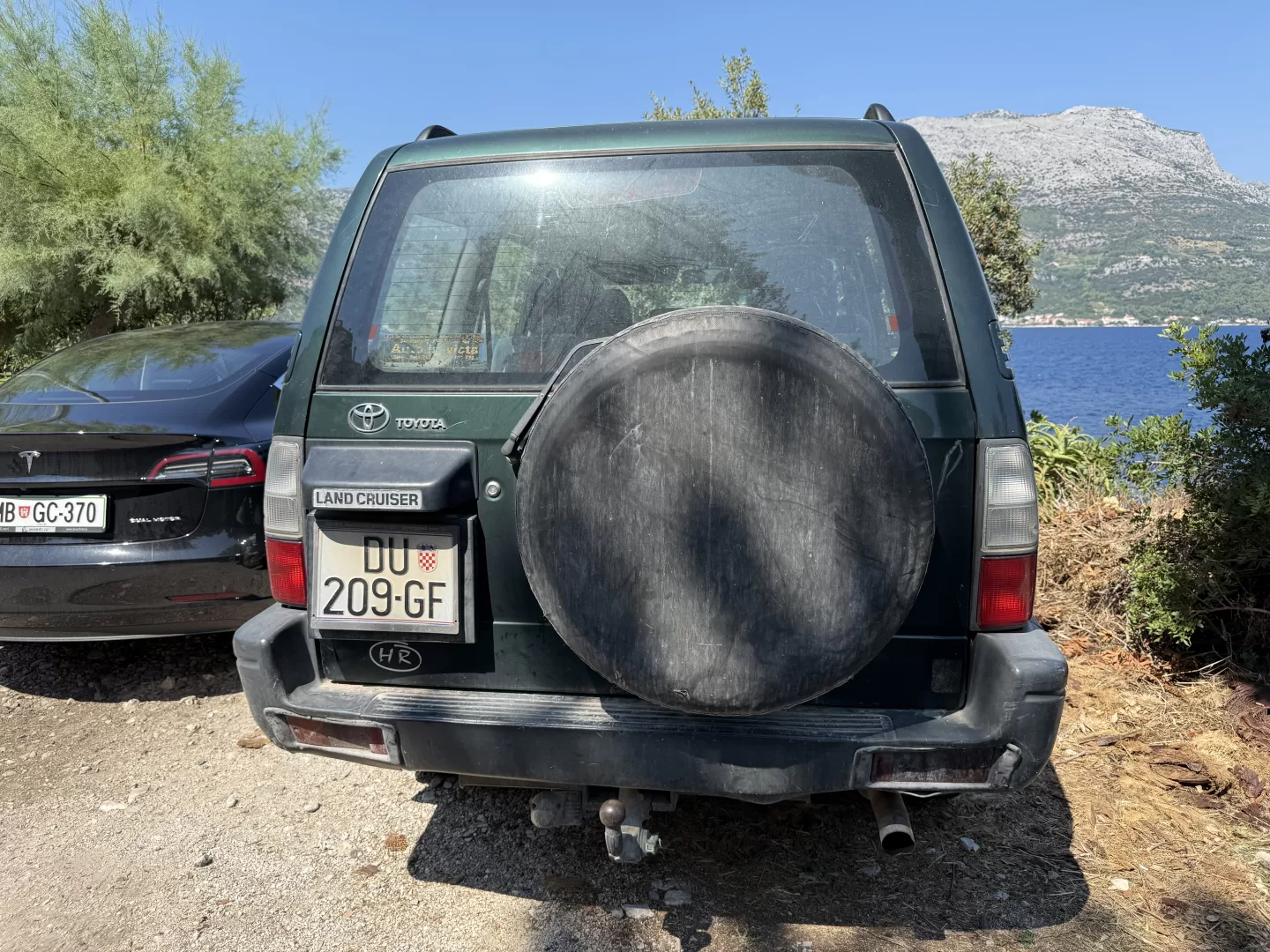
Case study: Opel Frontera Sport
| Spec | Detail |
| Model / year | Opel Frontera Sport |
| Engine | 2,0 petrol, 115 hp when new |
| Notable quirks | Off-road tires |
| Condition | In surprisingly good shape |
A few minutes of walking over sits a bright red Opel Frontera Sport. A rebadged Isuzu MU, it’s the three-door version with a removable rear section, painted in black to contrast the red of the bodywork. These sections are somewhat easy to remove, but with age, they leak water and become more and more challenging to take care of. On an island, however, there is not much worry about rain.
When I was younger, these were somewhat popular in Croatia, and there was also the Frontera Wagon model, but they dissappeared seemingly overnight, probably the victims of rust and poor fuel economy for their power. To illustrate this, the ‘sport’ model is not sporty at all, and has just over 110 horsepower, coming from a 2,0 litre petrol engine. This is enough for island live,
The Fronteras were never common here, and this one’s in decent shape by island standards: all panels intact, paint mostly okay, side steps rusty but otherwise not that bad. The bumper is cracked, but that hardly matters. Overall, the Frontera catches the eye, perhaps because it is parked in the middle of the road.
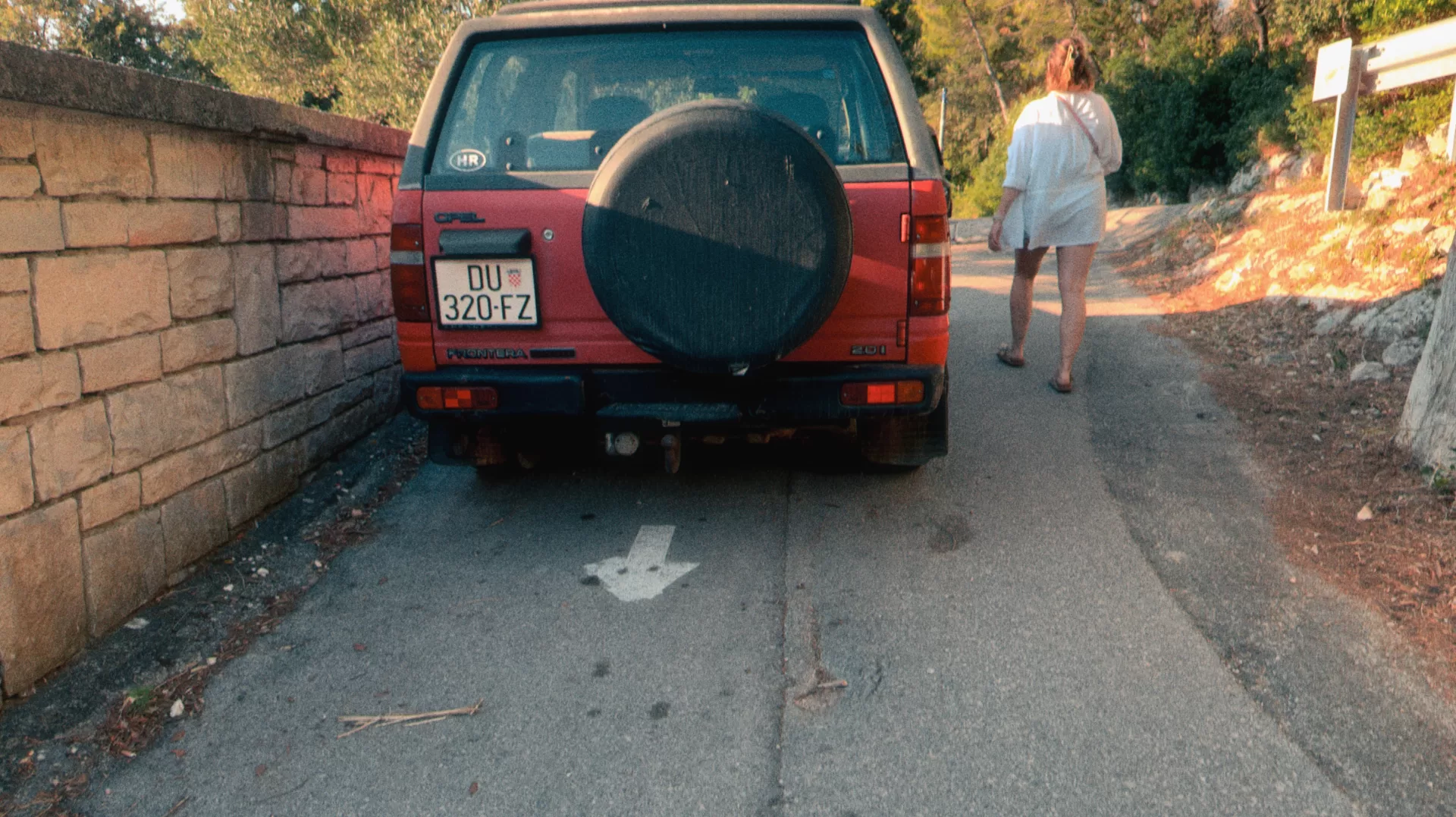
The third island car of choice is a gray E90 Toyota Corolla sedan from the late 80s, a car that we never had in Croatia, and one that was probably imported from overseas early in its life, since many of the Korčula residents were sailors and captains. There was a common practice of bringing interesting USDM or JDM cars into Croatia in the cargo spaces of ships, bypassing some of the regulations that are now commonplace.
The Corolla in question was in the roughest shape of the three cars we’re talking about today, mostly sitting under a large tree in front of its owner’s house. The owner, as far as I could deduce, is an older gentleman with not much use for cars and driving, so the Corolla is spending its days mostly waiting. At least it’s not in direct sunlight.
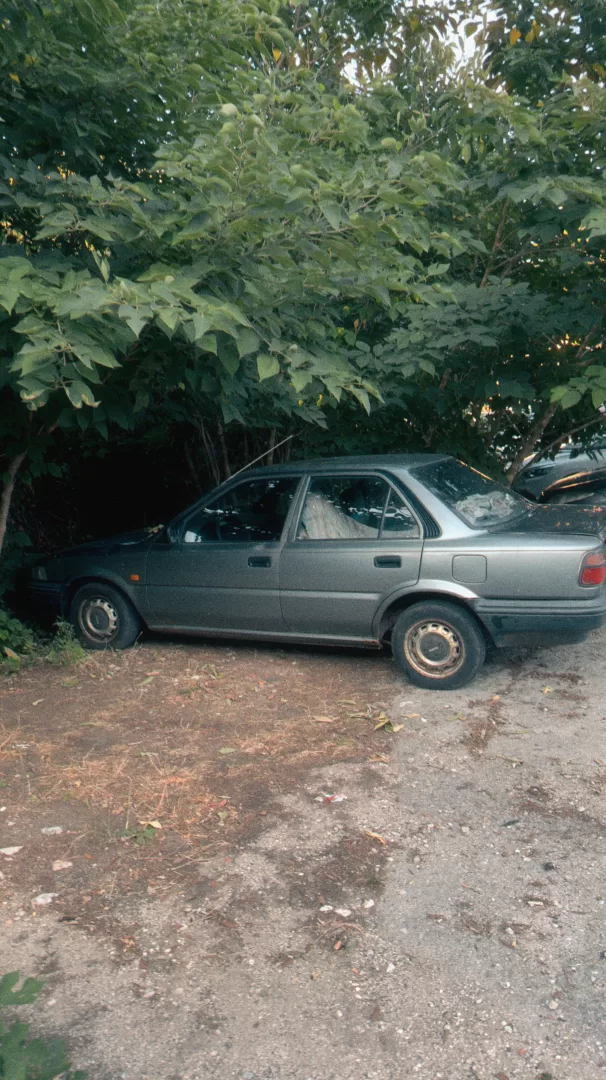
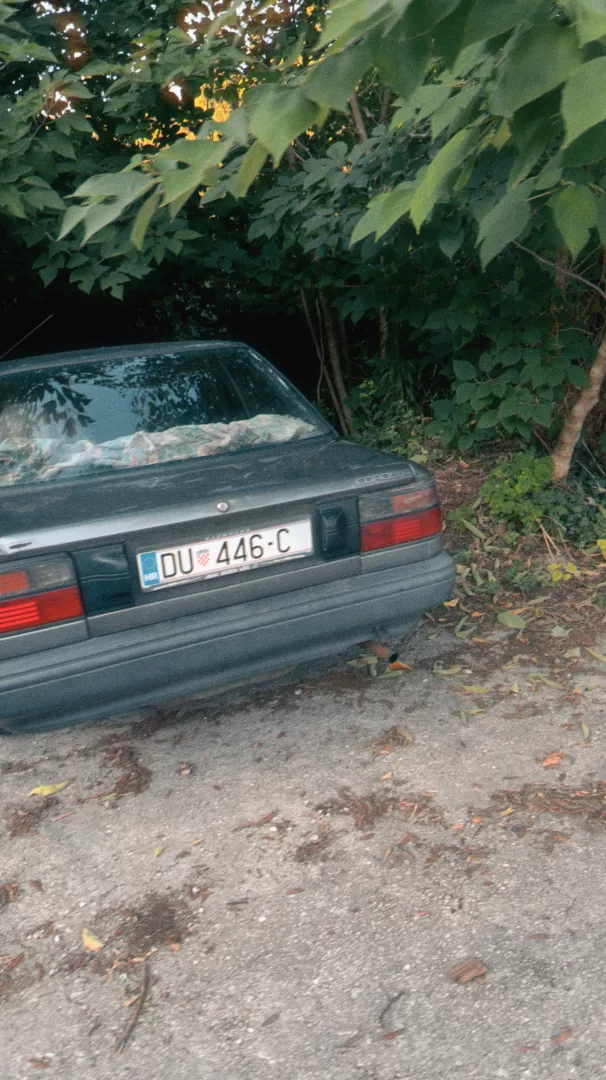
What makes a good island car?
- Is fine being left unlocked, with open windows and keys inside.
- Requires little maintenance, and is cheap to repair when needed.
- Has a licence plate, but can doubtfully pass inspection on the mainland.
- Has never seen the inside of a garage.
- Is used for hauling kids, groceries, inflatable boats and friends.
Why the island cars matter
These cars are invisible to most visitors, and pointing them out often resulted in surprise and mockery from my wife Ana. But these cars are an essential part of the island’s working machinery, just as much as the ferries or the fishing boats. They last because they’re used exactly as intended: not babied or displayed, just driven. Most of these cars are over 20 years old, and I’m pretty sure they will survive at least 20 more.
Given the choice, I’d take the Land Cruiser over the Audi. And I suspect it’ll still be here when the Audi’s gone.
